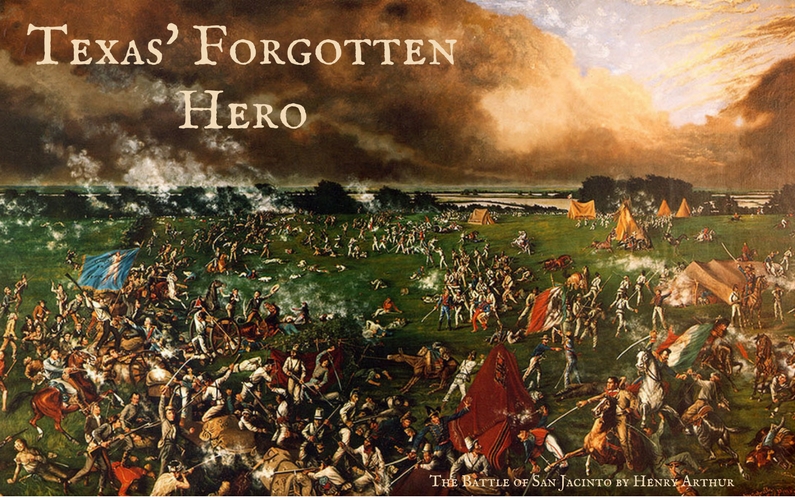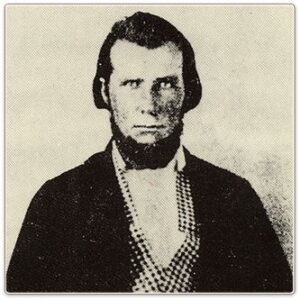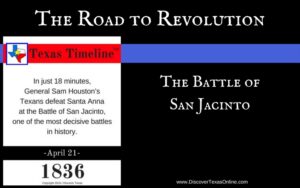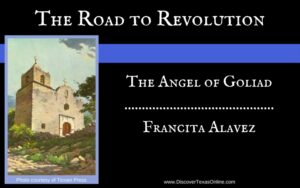
Lt. Col. Henry Millard
…has been nearly forgotten in Texas history, which is as much a mystery as it is a shame.

Born around 1796 in Stillwater, New York, this veteran commander of the Battle of San Jacinto was related to both the author Nathaniel Hawthorne and to President Millard Fillmore. As an up-and-coming young businessman he moved to Natchez, Mississippi where he met and married Mary Dewburleigh Barlace Warren Beaumont, the daughter of a prominent Natchez merchant, on August 24, 1826. Millard and his brother-in-law, Franklin Beaumont, opened a store in 1827, but the death of one business partner in 1833 and his young wife in 1834 left Millard a widower with two little boys to raise while struggling with grief and financial difficulties.
Leaving his sons in good care in New Orleans, Millard moved to Texas in 1835 and opened a store in a little settlement called Santa Anna on the banks of the Neches River. He also purchased 50 acres of land and, with partners, laid out a town with lots to be sold. The new town was named Beaumont in honor of Millard’s wife.
Now an influential citizen of Texas, Millard was chosen as a delegate to the Constultation–a meeting of Texans to discuss the growing grievances with Mexico and what might be done about them. He was elected to serve on the General Council of the Consultation, but resigned to accept a commission as lieutenant colonel in Sam Houston’s revolutionary army. In that role, he gathered recruits in Nacogdoches and negotiated treaties with General Houston among the Cherokees.
Spring of 1836 found Millard marching with Houston toward San Jacinto in command of a regular infantry battalion. During the famous April 21 battle, Millard led two companies of regular infantry and a battalion of volunteers who attacked from the right flank to capture the hastily-constructed Mexican defenses. In recognition of Millard’s contributions to the victory, General Houston gave him two dueling pistols that had belonged to the vanquished Mexican general, Santa Anna. You can see these today at the Republic of Texas Museum in Austin, TX.
So Henry Millard played several key roles in settling and establishing the Republic of Texas, but he did not get to enjoy it long. After moving to Galveston, his health suffered, and Millard died in August 1844 and was buried in the Episcopal Cemetery. He was only about 48 years old.
Of those who distinguished themselves in battle at San Jacinto–men such as Sam Houston, “Deaf” Smith, Jose Antonio Navarro, Sidney Sherman, Thomas Rusk, and Mirabeau Lamar–most are remembered by a city or county named in their honor…sometimes both. But Lt. Col. Henry Millary, who petitioned for independence and secured the right flank in Texas’ battle for freedom, is memorialized only by a small Beaumont school and the 13th hole at Battleground Golf Course in Deer Park, Texas.
I, for one, wish there was some way Texas could fix that oversight!



